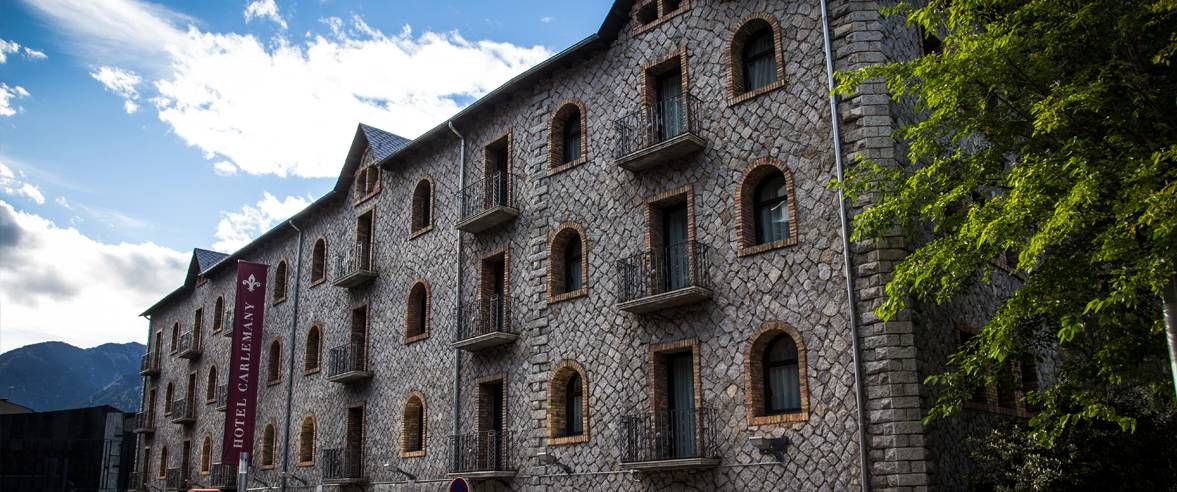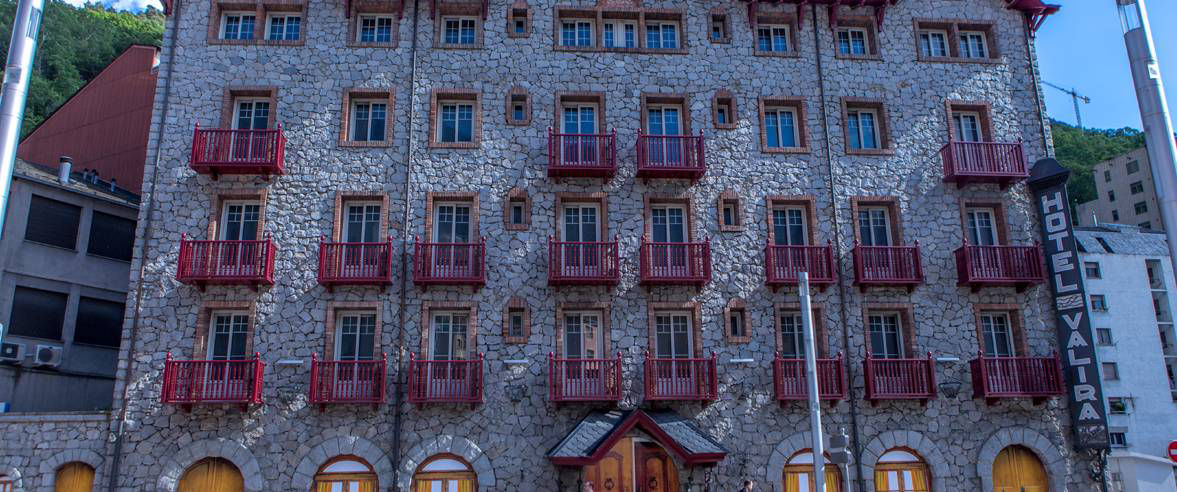Contemporary architecture in Andorra



At the start of the 20th century, road works began and from the 1930s onwards, there was a notable change in the traditional architecture, lasting until the 1960s, with granite architecture. This emerged as a result of the boost in spa tourism, the country's electrification, seasonal emigration of young apprentice bricklayers and input from renowned architects in building the country.
This style of architecture blends perfectly with the natural environment, by using local stone for façades, an innovation in the architecture that had existed until then. This was the time when large hotels and spas were built (Hostal Valira, Carlemany, Hotel Rosaleda, to name a few), electricity arrived with the construction of FEDA, Radio Andorra began broadcasting in a state-of-the-art building, and the Valira Cinema and later the Carlemany became new hotspots for entertainment.
Prominent examples from this period include the “Casa dels Russos” (1916), by the architect César Martinell, who was one of Gaudí's disciples, in which local materials visually transform Catalan Modernisme's general traits, and “Casa la Creu” from the 1930s by the Catalan architect and distinguished art historian Josep Puig i Cadafalch. Other examples include the dam and guard house in Ràmio, Hotel Carlemany, Casa Xurrina, the old Valira cinema (now the headquarters of the CAEE), Casa Vidal, Casa Palmitjavila and Casa Duró, as well as many more hidden architectural features in the urban landscape.
Towards the end of the 20th century, various building projects led to a another makeover in the Principality, such as the new Meritxell Sanctuary by “Taller de Arquitectura” founded by Ricard Bofill, the world-renowned architect and urban planner, and a leading figure in post-modern contemporary architecture for his use of classical elements in his work. The Caldea thermal spa and leisure centre, designed by the French architect Jean-Michel Ruols, has become an iconic image of Escaldes-Engordany and Andorra since it opened to the public in 1994, as well as being a major tourist attraction.
The 21st century
This century saw the construction of the new, striking and highly symbolic Consell General (Parliament) building, created by Engitec, a team of Andorran architects and engineers led by Pere Espuga (architect) and Josep Maria Planes (engineer). It was built next to Casa de la Vall, the former Consell building, and was opened in 2011 before being officially inaugurated in 2014, during the first joint visit of the Co-Princes François Hollande and Joan-Enric Vives to Andorra.
Four other civil constructions, which are also part of the Principality's new visual landscape, are engineering works that have quickly become major tourist attractions.
Two of these are viewpoints, one being Roc del Quer, opened in 2016, which provides breathtaking views of the Canillo valley and its surroundings. The viewing platform has a glass section, with a sculpture of the thinker at the end by artist Miguel Ángel González. The second viewpoint is called Solar de Tristaina and can be found on the peak of Peyreguils at 2701m above sea level, in the Tristaina cirque, Ordino-Arcalís. This circular metallic suspension structure, measuring 25m in diameter, overlooks the lakes of Tristaina and the Ordino valley, as well as the other peaks of the cirque and France.
The third structure is the Tibetan bridge in Canillo. This bridge, 603m in length, 1m wide, and with a maximum height of 158m over the river valley, has attracted thousands of tourists every season since it was opened to the public.
Finally, there is the Pont de Paris, which connects Avinguda Dr. Mediavila with Carrer Consell d'Europa. It is an impressive construction dating from 2005, created by the engineers Leonardo Fernández Troyano and Guillermo Ayuso Carrer. The structure has a 45m straight section and a 27m semicircular design, with two triangular structures, crowned by two steel spheres measuring 2.20m in diameter, where the supporting braces converge. The view from the Plaça de la Rotonda, with the illuminated sign of the capital and the fountains of light, music and colours installed along this stretch of the Valira river, has made it one of the country's best-known and most photographed tourist attractions.
We should also mention the Juberri gardens, which provide stunning views over the valley of Sant Julià de Lòria. Standing at an altitude of 1250m in Juberri, these gardens, created as a family retreat, are where the work of the sculptor Àngel Calvente is on display, creating a symbiosis with the surroundings that is sure to amaze any visitor. Over the years, a fantasy world has been created, filled with a diverse collection of sculptures, where you can stroll around, letting your imagination run wild and enjoying the surroundings.
